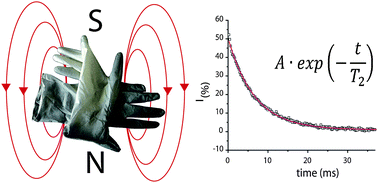Latex gloves are employed by felons who want to avoid shedding fingermarks or biological traces, and are sometimes discarded on the crime scene or nearby. Comparison between the gloves found at the crime scene and those seized in the suspect's premises can provide useful information to investigators. This paper proposes the use of 1H time domain nuclear magnetic resonance (TD-NMR) as a method for performing such a comparison. Two parameters can be quantified by this technique: the proton weight fraction, which is correlated to the chemical nature and formulation of the material, and the relaxation time T2, which is a measure of polymer chain dynamics. Both these features can be ultimately associated to differences in raw materials, formulation and processing of the gloves, thereby offering a means to discriminate items which are indistinguishable by visual examination. TD-NMR, without sample preparation and preserving the integrity of the specimen, allows differentiating 88% of the possible pairs of samples in a population of 20 latex gloves. TD-NMR data are complementary to those coming from thermal analysis.

You have access to this article
 Please wait while we load your content...
Something went wrong. Try again?
Please wait while we load your content...
Something went wrong. Try again?


 Please wait while we load your content...
Please wait while we load your content...